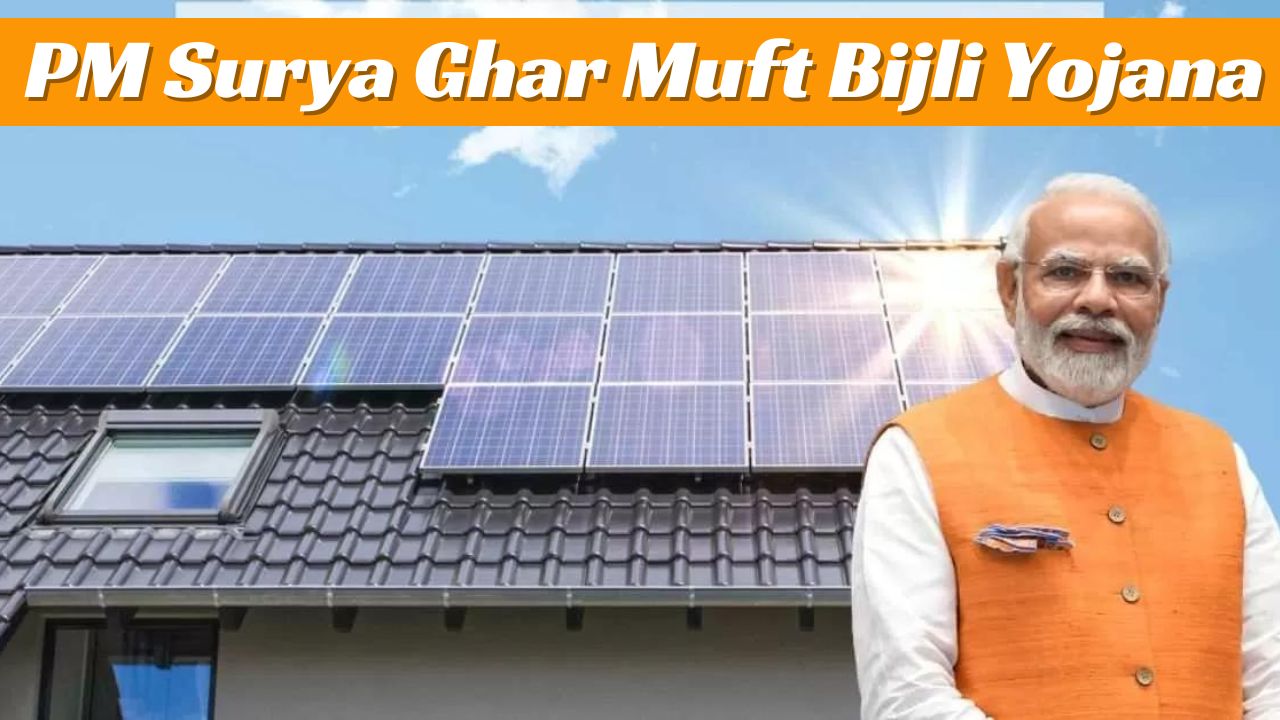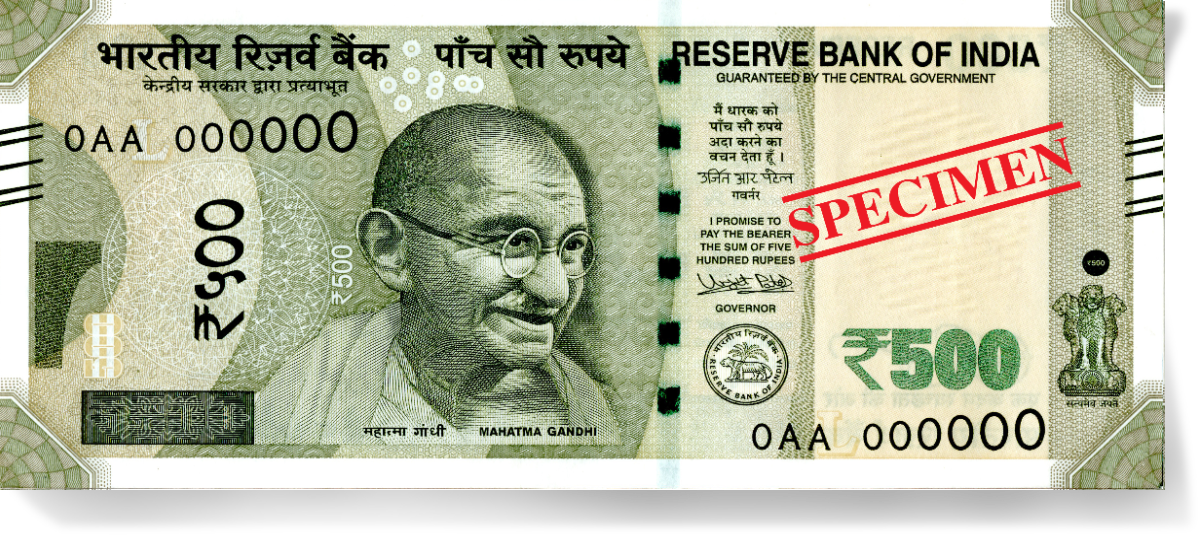Unveiling the PM Surya Ghar Muft Bijli Yojana: A Glimpse into its Core Objectives
In February 2024, Prime Minister Narendra Modi launched the PM Surya Ghar Muft Bijli Yojana, an ambitious initiative designed to revolutionize the way Indian households access electricity. This groundbreaking scheme boasts a four-pronged approach:
Empowering homes with free electricity: Up to 1 crore Indian households will be eligible to receive free electricity generated by rooftop solar panels installed on their homes. This translates to significant savings on electricity bills, offering much-needed financial relief.
Promoting widespread adoption of solar energy: The scheme aims to accelerate the use of solar power in India. By incentivizing rooftop solar installations, the government hopes to create a more sustainable and environment-friendly energy landscape.
Reaching a nationwide audience: The scheme has a pan-India reach, targeting 1 crore households across the country. This ensures that the benefits of clean energy and free electricity are accessible to a diverse range of communities.
Investing in a sustainable future: With a dedicated budget of Rs. 75,021 crore, the government demonstrates its commitment to fostering a more sustainable energy future for India. This not only benefits the environment but also paves the way for long-term economic growth.
The PM Surya Ghar Muft Bijli Yojana is a comprehensive plan with the potential to significantly impact individual lives and the nation's energy landscape. By providing free electricity, promoting solar energy, and reaching a broad audience, the scheme is a crucial step towards a brighter and more sustainable future for India.
Unveiling the Treasure Trove of Benefits: PM Surya Ghar Muft Bijli Yojana
The PM Surya Ghar Muft Bijli Yojana isn't just about free electricity; it's a treasure trove of benefits for both individuals and the nation. Let's delve into the key advantages it offers:
Lighten your load, not your wallet: Imagine slashing your electricity bills with up to 300 units of free electricity every month! This translates to significant savings, easing the financial burden on households.
Embrace energy independence: By generating your own electricity, you'll become less reliant on the grid, fostering a sense of self-sufficiency and energy security. No more worrying about sudden power cuts or fluctuating electricity prices.
Go green, feel good: By harnessing the sun's power, you'll be actively contributing to a cleaner environment. Reduced dependence on fossil fuels translates to lower carbon emissions, benefiting both you and the planet.
Sustainable living, a brighter future: The scheme promotes sustainable energy practices, paving the way for a greener future for generations to come. It's a chance to be a part of the solution and leave a positive impact on the environment.
A brighter job market: The increased demand for solar panel installation and maintenance creates new job opportunities in the solar energy sector, boosting the economy and empowering individuals.
So, the PM Surya Ghar Muft Bijli Yojana is more than just free electricity; it's a chance to save money, embrace self-reliance, go green, and contribute to a sustainable future for all.
Bringing Solar Power Home: The Implementation Process of PM Surya Ghar Muft Bijli Yojana
The PM Surya Ghar Muft Bijli Yojana aims to make solar power accessible and affordable for millions of Indian households. But how exactly does it work in practice? Let's delve into the implementation process:
Government Subsidy: The scheme provides a crucial financial boost, offering a subsidy of up to 40% for the installation of rooftop solar panels. This subsidy applies to systems with a capacity up to 3 kW, making it easier for families to manage the initial investment.
Online Registration: Embracing the digital age, the scheme simplifies application by offering online registration through the official website: https://pmsuryaghar.gov.in.
This user-friendly platform allows you to register, apply for the subsidy, and track the status of your application.
Collaboration for Success: To ensure smooth implementation, the scheme fosters collaboration between various entities. The government works closely with local authorities, who help identify eligible beneficiaries and streamline permitting processes. Additionally, private companies play a vital role by manufacturing, supplying, and installing solar panels, ensuring project completion and proper system functioning.
By streamlining the application process, providing financial support, and fostering collaboration, the PM Surya Ghar Muft Bijli Yojana aims to make rooftop solar power a reality for countless Indian households, paving the way for a brighter and more sustainable future.
Unlocking Free Electricity: Eligibility and Application Process for PM Surya Ghar Muft Bijli Yojana
The PM Surya Ghar Muft Bijli Yojana promises free electricity and a path towards energy independence, but before harnessing the sun's power, you need to ensure you meet the eligibility criteria and navigate the application process.
Who can participate?
To be eligible for the scheme, you must fulfill the following requirements:
Indian Citizenship: This scheme is exclusively open to Indian households.
Suitable Rooftop: Your home must have a rooftop suitable for installing solar panels. This means it should have adequate sun exposure throughout the day, be structurally sound, and have sufficient space to accommodate the required number of panels.
Legal Occupancy: You need to be the owner of the house or have legal occupancy rights with permission from the owner to install the solar panels.
Grid Connection: Your home must be connected to the electricity grid. This is because the scheme utilizes net metering, where any excess electricity generated by your panels can be fed back into the grid, earning you credits on your electricity bills.
Applying for the Scheme: A Step-by-Step Guide
Once you confirm your eligibility, you can embark on the application process:
Visit the Official Website: Head over to the PM Surya Ghar Muft Bijli Yojana website (https://pmsuryaghar.gov.in/notifications/paginationView/page/2).
State and DISCOM Selection: Choose your state and electricity distribution company (DISCOM) from the available dropdown menus.
Registration: Click on the "Register Now" button and enter the following information:
Electricity Consumer Number: You can find this number on your electricity bill.
Mobile Number: This will be used for receiving updates and verification purposes.
Email Address: (Optional) An email address can be used for additional communication.
Verification: You will receive a One-Time Password (OTP) on your registered mobile number for verification. Enter the OTP to complete the registration process.
Application Form: Once registered, you'll be able to access the application form. Fill out the form carefully, providing details such as:
Personal Information: Name, address, contact details, etc.
Rooftop Details: Dimensions, orientation, and any potential obstructions.
Estimated Electricity Consumption: This information can be found on your past electricity bills.
Document Upload: Upload scanned copies of the required documents, which may include:
Proof of Identity: Aadhaar card, PAN card, voter ID, etc.
Proof of Address: Electricity bill, ration card, property documents, etc.
Proof of Ownership/Occupancy: Property documents, rental agreement, etc.
Rooftop Photos: Clear pictures of your rooftop showcasing its condition and suitability.
Submission and Review: Once you've completed the form and uploaded the necessary documents, carefully review everything before submitting the application.
Selection Process and Timelines: Following submission, your application will be reviewed by the concerned authorities. The selection process can take up to 4 weeks to complete. You will be notified via email or SMS about the status of your application.
Need Assistance?
If you encounter any difficulties during the application process, you can seek help through the following channels:
Online Help Desk: The official website has an online help desk feature where you can submit your queries.
Toll-Free Helpline: A toll-free helpline number might be available depending on your state. Check the website for information.
Contacting Local Authorities: You can also reach out to your local DISCOM office or designated nodal agencies for assistance.
Remember, meeting the eligibility criteria and following the application process paves the way for you to embrace a sustainable future and enjoy the benefits of free electricity under the PM Surya Ghar Muft Bijli Yojana.
Unveiling the Financial Benefits of PM Surya Ghar Muft Bijli Yojana
The PM Surya Ghar Muft Bijli Yojana isn't just about reducing your dependence on the grid and going green; it also offers several attractive financial benefits that can make transitioning to solar power an even sweeter deal. Let's delve deeper into the financial aspects and incentives associated with the scheme.
A. Subsidy Structure: Powering Up Your Savings
The government plays a crucial role in making solar power accessible through a subsidy structure. This means you don't have to shoulder the entire cost of installing the system. Here's a breakdown of the subsidy offered:
60% subsidy: This is applicable for 2 kW systems, which are generally suitable for powering a typical household.
40% subsidy for additional capacity: If you require a larger system (between 2-3 kW) to meet your electricity needs, you still receive a 40% subsidy on the additional cost.
Capped at 3 kW: The maximum subsidy amount is capped at the cost of a 3 kW system. This ensures the scheme caters to a broad range of households while maintaining fiscal responsibility.
It's important to note that this subsidy structure is the default and may vary slightly across states or regions. Be sure to check with your local authorities or visit the official scheme website (https://pmsuryaghar.gov.in/notifications/paginationView/page/3)
for the specific subsidy applicable in your area.
B. Beyond Free Electricity: Additional Financial Incentives
The benefits of PM Surya Ghar Muft Bijli Yojana extend beyond the free 300 units of electricity you receive every month. Here are some additional financial advantages to consider:
Net metering policy: This policy allows you to sell any excess electricity generated by your solar panels back to the grid. You receive credits on your electricity bills for the amount of energy fed back, further reducing your electricity costs.
State-specific tax benefits and rebates: Several states offer additional tax benefits or rebates to individuals and families who adopt solar power. These incentives can significantly reduce the upfront cost of installing the system.
Long-term savings on electricity bills: While there's an initial investment involved, the long-term savings on your electricity bills can be substantial. Over time, the money saved through free electricity, net metering, and potentially lower electricity bills can far outweigh the initial investment.
C. Cost Considerations: A Balanced Perspective
It's important to be transparent about the costs associated with the scheme. While the government subsidy significantly reduces the initial cost, there are still some factors to consider:
Initial investment: You'll need to cover the non-subsidized portion of the system installation cost. This amount will vary depending on the size of the system you choose.
Maintenance costs: Solar panels require minimal maintenance, but there might be occasional cleaning or repair needs associated with them.
Long-term cost-effectiveness: While there's an initial investment, remember that the long-term savings on electricity bills, combined with the free units and potential additional incentives, can lead to significant cost savings over the lifespan of the solar panels.
By carefully considering the financial aspects and incentives, you can make an informed decision about whether PM Surya Ghar Muft Bijli Yojana is the right fit for your family. Remember, the initial investment can be seen as an investment in your future financial well-being and a commitment to a sustainable future.
PM Surya Ghar Muft Bijli Yojana: Frequently Asked Questions
The PM Surya Ghar Muft Bijli Yojana offers exciting opportunities for Indian households to embrace solar power and enjoy the benefits. However, it's natural to have questions about its specifics. Here are answers to some frequently asked questions to help you navigate the scheme:
A. How much free electricity will I get under the scheme?
The scheme offers up to 300 units of free electricity every month. This can significantly reduce your reliance on the grid and your electricity bills, especially if your household falls within the average monthly consumption range.
B. What type of rooftop is suitable for solar panel installation?
For optimal performance, your rooftop should ideally be south-facing, unshaded, and have sufficient structural strength to support the weight of the panels. However, even slightly off-south facing roofs might still be suitable, so it's best to consult with a registered vendor for a feasibility assessment.
C. How long does the application process usually take?
The application processing time can vary depending on several factors, including the volume of applications and local verification procedures. However, you can generally expect the process to be completed within 2-4 weeks after submitting your application.
D. What happens to the excess electricity generated by my solar panels?
Thanks to the net metering policy, any excess electricity your system generates during the day can be fed back into the grid. This earns you credits on your electricity bill, which can be used to offset future electricity consumption from the grid.
E. Is there any maintenance required for the solar panels?
While solar panels are generally low-maintenance, regular cleaning to remove dust and debris is recommended to ensure optimal performance. Additionally, periodic inspections by a qualified technician are advisable to identify any potential issues early on.
F. What are the potential challenges of installing rooftop solar panels?
One potential challenge could be the initial investment required for the unsubsidized portion of the system and ongoing maintenance costs. However, the long-term savings on electricity bills typically outweigh these costs. Additionally, the scheme is relatively new, so there might be some initial hiccups in the application process.
G. Is the scheme available in my state/region?
The PM Surya Ghar Muft Bijli Yojana is a nationwide scheme and is currently available in all states and regions of India. However, specific implementation details and potential variations in subsidies might differ depending on your location.
H. Where can I find more information about the scheme?
For comprehensive information about the PM Surya Ghar Muft Bijli Yojana, you can visit the following resources:
Official website: https://pmsuryaghar.gov.in/notifications/paginationView/page/2
MyScheme - PM Surya Ghar: Muft Bijli Yojana: https://www.myscheme.gov.in/search?tag=Rooftop%20Solar
PM announces Surya Ghar Muft Bijli Yojana: https://www.wionews.com/india-news/pm-modi-launches-rooftop-solar-scheme-pm-surya-ghar-muft-bijli-yojana-to-provide-free-electricity-689968
Remember, these resources offer valuable information and can answer any further questions you may have. Don't hesitate to explore them and make an informed decision about embracing the benefits of solar power through the PM Surya Ghar Muft Bijli Yojana.
Powering the Future: PM Surya Ghar Muft Bijli Yojana's Impact on the Environment
The PM Surya Ghar Muft Bijli Yojana isn't just about saving money and empowering households; it's also a significant step towards a greener future for India. Let's delve into how the scheme contributes to environmental protection and explore the challenges and opportunities associated with achieving large-scale sustainability.
A. Embracing Clean Energy: A Boon for the Environment
Curbing Carbon Footprint: The scheme directly reduces India's reliance on traditional, fossil fuel-based power generation. As millions of households switch to solar energy, the dependence on coal and gas power plants decreases. This translates to a significant reduction in greenhouse gas emissions, particularly carbon dioxide, a major contributor to climate change.
Harnessing the Power of the Sun: Solar energy is a renewable resource, meaning it's constantly replenished by the sun, unlike fossil fuels which are finite. By promoting solar power, the scheme fosters a shift towards a sustainable energy source, ensuring long-term energy security and environmental benefits.
Aligning with National Goals: India has set ambitious goals for reducing its carbon footprint and increasing renewable energy production. The PM Surya Ghar Muft Bijli Yojana aligns perfectly with these national aspirations, contributing to a cleaner and more sustainable future for the entire nation.
B. Navigating the Path to Sustainability: Challenges and Opportunities
While the environmental benefits are undeniable, achieving large-scale sustainability with the scheme comes with its own set of challenges and opportunities.
Raising Awareness and Building Participation: Public awareness about the scheme and the benefits of solar energy is crucial for its widespread adoption. Increased outreach and educational campaigns can encourage more households to participate, maximizing the environmental impact.
Responsible Waste Management: Solar panels, though durable, eventually reach the end of their lifespan. Developing efficient recycling and disposal strategies for these panels is crucial to prevent environmental damage and ensure the long-term sustainability of the scheme.
Strengthening Grid Integration: Integrating a large number of rooftop solar systems into the existing grid infrastructure requires careful planning and upgrades. Robust grid infrastructure will ensure efficient management of fluctuating solar power generation and seamless integration with traditional sources.
Innovation and Cost Reduction: Technological advancements can play a key role in improving the efficiency and affordability of solar panels. This will not only make them more accessible to a wider range of households but also contribute to a more sustainable future by reducing the environmental impact of manufacturing and installation.
The PM Surya Ghar Muft Bijli Yojana presents a unique opportunity for India to embrace clean energy, reduce its carbon footprint, and achieve greater sustainability. By addressing the existing challenges and harnessing the opportunities for innovation and public participation, the scheme can pave the way for a brighter, cleaner future for generations to come.
VI. The Power of Collaboration: Stakeholders Driving the PM Surya Ghar Muft Bijli Yojana
The success of the PM Surya Ghar Muft Bijli Yojana hinges on the collaborative efforts of various stakeholders, each playing a crucial role in bringing solar power to millions of Indian homes. Let's delve into the specific contributions of each group:
A. Government: Steering the Ship
The government acts as the driving force behind the scheme, playing a multifaceted role:
Financial Support: The government provides the backbone of the scheme through subsidies that make solar panel installation more accessible for households.
Policy Framework: They establish a robust policy framework to govern the scheme's implementation, ensuring smooth operation and fair distribution of benefits. This includes setting eligibility criteria, determining subsidy structures, and outlining procedures for application and approval.
Public Awareness: Raising public awareness is crucial for widespread adoption. The government actively engages in awareness campaigns to educate citizens about the benefits of the scheme, dispel misconceptions, and encourage participation.
Collaboration: The government fosters collaboration with private companies and research institutions. This collaboration helps drive technological advancements, improve efficiency, and ensure the scheme's long-term sustainability.
B. Local Authorities: Bridging the Gap
Local authorities act as the liaison between the government and the beneficiaries:
Identifying Beneficiaries: They play a vital role in identifying eligible households within their jurisdictions and ensuring they are aware of the scheme's benefits.
Promoting the Scheme: Local authorities can actively promote the scheme through community outreach programs, local media engagement, and information sessions. This can help address initial hesitation and encourage participation.
Streamlining Processes: Local authorities can streamline permitting processes and provide technical assistance to households during the application and installation phases. This can significantly reduce administrative burdens and accelerate the scheme's implementation.
Addressing Local Concerns: They can also act as a sounding board for addressing local challenges and concerns related to the scheme. This can involve facilitating communication between stakeholders and ensuring the program adapts to local needs and contexts.
C. Private Sector: Powering the Progress
The private sector serves as the engine of the scheme's execution:
Manufacturing and Installation: Private companies play a crucial role in manufacturing, supplying, and installing solar panels for beneficiary households. Ensuring high-quality components, efficient installation processes, and competitive pricing are vital for the scheme's success.
Financing Options: The private sector can offer financing options such as loans or pay-as-you-go schemes, making solar panel installation more accessible for households with limited upfront capital.
Maintenance and Services: Providing maintenance and after-sales services is crucial for the long-term viability of the solar panels. Private companies can offer these services to ensure optimal system performance and address any technical issues that may arise.
Technological Innovation: The private sector is also a key driver of technological innovation in the solar energy sector. This can lead to the development of more efficient and affordable solar panels, further enhancing the scheme's appeal and long-term sustainability.
D. Individuals and Households: Active Participants, Amplified Impact
The ultimate beneficiaries, individuals and households, play a vital role in the scheme's success:
Participation and Adoption: Their active participation in the scheme is essential. By taking the initiative to apply, install solar panels, and embrace sustainable practices, they contribute significantly to the program's reach and impact.
Community Awareness: By sharing their positive experiences and advocating for the scheme, households can promote awareness within their communities and encourage others to participate. This organic grassroots movement can significantly amplify the scheme's impact and encourage wider adoption.
Feedback and Improvement: Providing constructive feedback and suggestions for improvement is crucial. This feedback can help the government and other stakeholders refine the scheme, address any challenges, and ensure it continues to meet the evolving needs and aspirations of the beneficiaries.
In conclusion, the PM Surya Ghar Muft Bijli Yojana's success relies on the synergy of various stakeholders. By working together, the government, local authorities, the private sector, and individual households can collectively empower millions of families with clean, affordable energy, paving the way for a brighter and more sustainable future for India.
Conclusion: A Brighter Future Powered by the Sun
The PM Surya Ghar Muft Bijli Yojana is a beacon of hope, illuminating a path towards a more sustainable and empowered future for Indian households. This ambitious scheme offers a compelling combination of financial benefits, environmental advantages, and individual empowerment.
Let's recap the key features:
Free electricity: Up to 300 units of free electricity per month, significantly reducing dependence on the grid and saving money on bills.
Financial incentives: Government subsidy covering up to 40% of the rooftop solar panel installation cost, making it an affordable option.
Environmental benefits: Reduced reliance on fossil fuels and carbon emissions, contributing to a cleaner and healthier environment.
Empowering individuals: Fostering self-reliance and energy security by enabling households to generate their own electricity.
Job creation: Potential for job growth in the solar energy sector, boosting the economy.
While challenges like initial investment costs and potential implementation hiccups exist, the long-term benefits outweigh these concerns. The government's commitment to smooth implementation and the potential for cost reductions through technological advancements paint a promising picture for the future.
The PM Surya Ghar Muft Bijli Yojana is not just a scheme; it's an opportunity. It's an opportunity to break free from the shackles of rising electricity bills, an opportunity to contribute to a greener tomorrow, and an opportunity to empower yourself and your family.
So, what are you waiting for? Take the first step towards a brighter future. Explore the scheme, assess its suitability for your home, and join the solar revolution. Together, let's harness the power of the sun and illuminate a path towards a sustainable and prosperous future for all.
website link Pm suryaghar Yojana , Muft bijli Yojana
Written By: Muktar

























